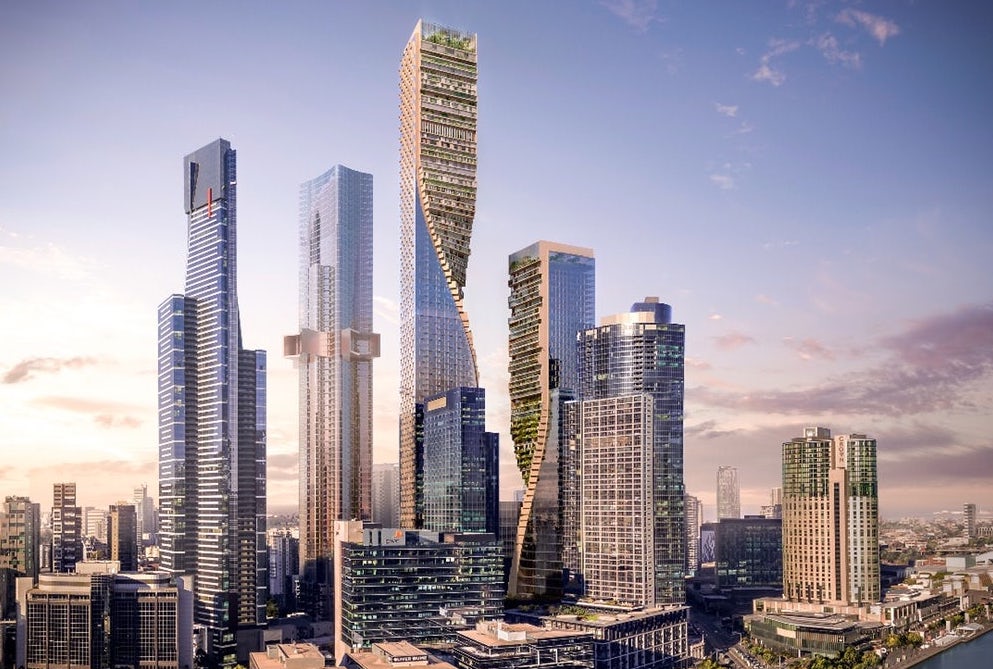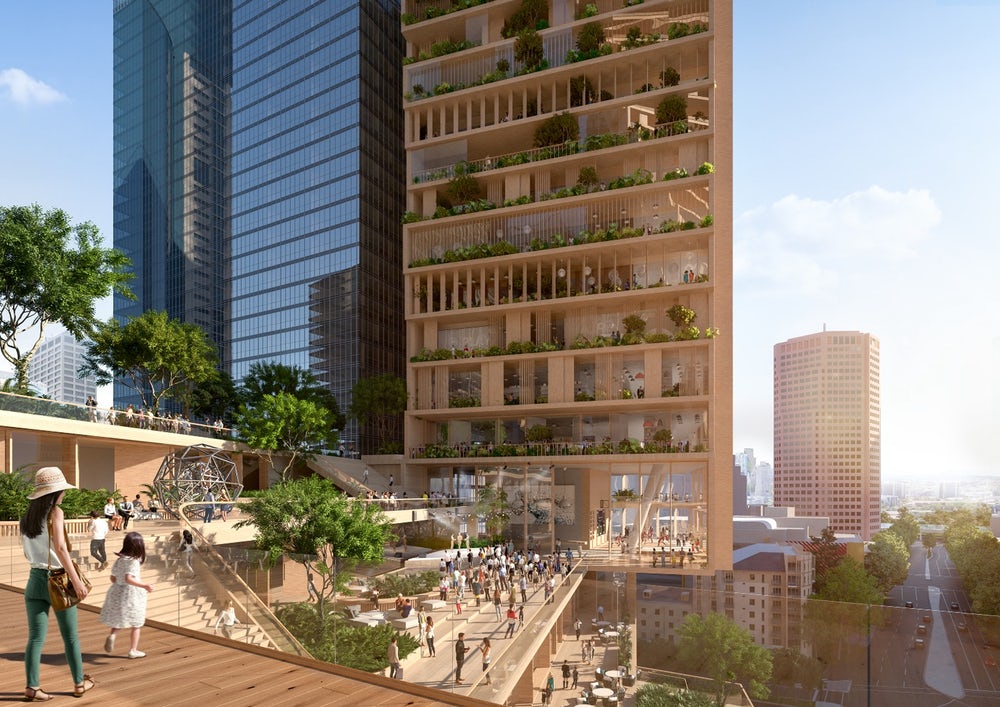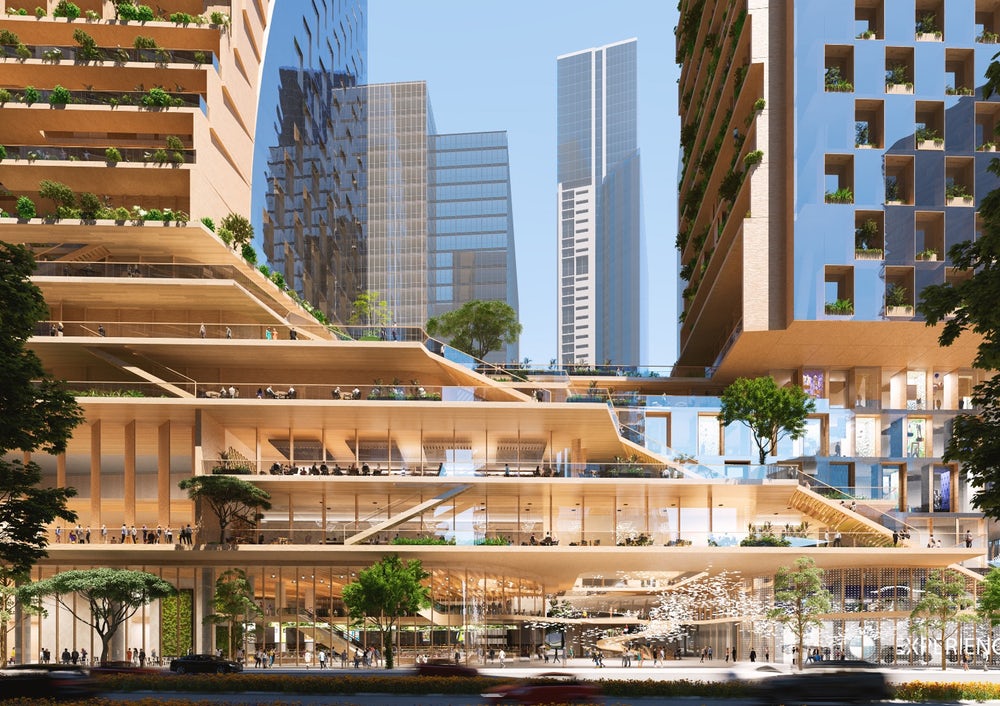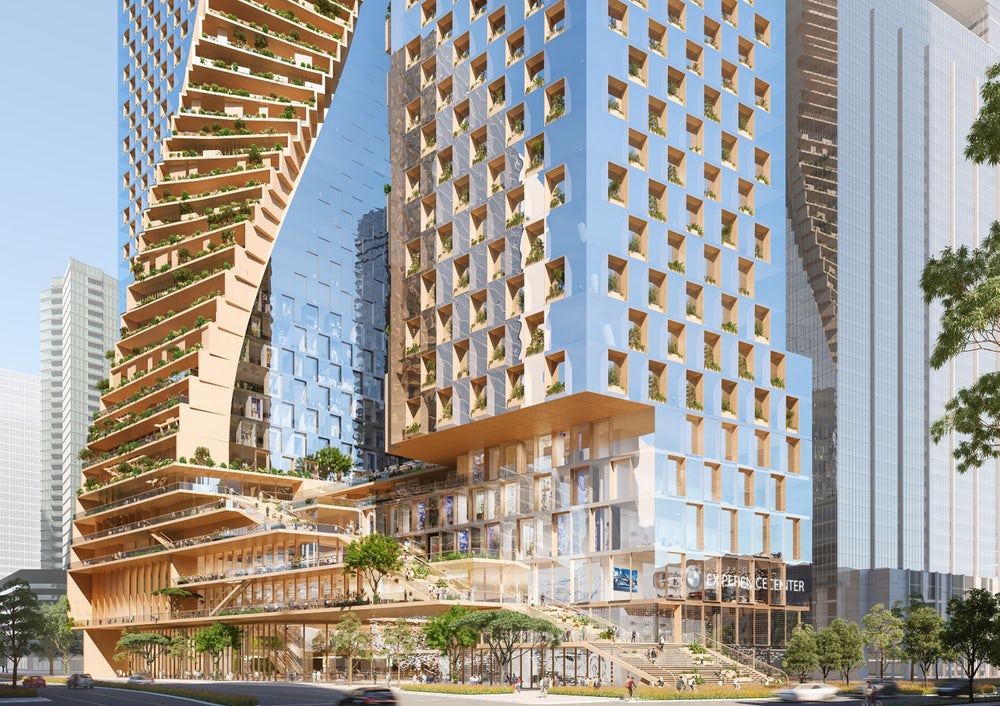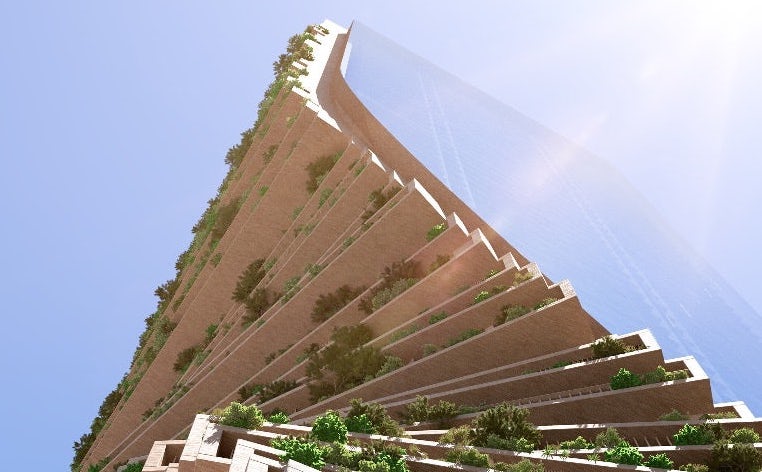A spectacular twisting structure bedecked with trees and plants is on course to become Australia’s tallest building.
The so-called “Green Spine” was recently announced as the winner of an international design competition organized by property developer Beulah International, which hopes to build the 356-meter-tall structure in the center of Melbourne.
So long as it secures the necessary planning permission, the Green Spine, the brainchild of Dutch company UNStudio and Australia’s Cox Architecture, will become the focus of Melbourne’s skyline in the early 2020s.
The striking design features a glass facade and twisting cascades of greenery among two towers rising above Melbourne’s Southbank neighborhood, located just across from the city’s Central Business District and Royal Botanic Gardens.
A publicly accessible terraced park is also part of the design, as is a botanic garden atop the tallest of the two towers. The Green Spine includes space for apartments, a hotel, offices, restaurants, bars, and a “BMW experience center.”
‘A city in itself’
The designers describe the ambition of the Green Spine as twofold: “A building that is a city in itself, with its multitude of programs and connectivities, as well as being fully integrated in the existing city network of cultural, entertainment, leisure, and commercial offerings.”
The winning proposal, which was selected last week by a panel of seven judges, beat six other shortlisted designs that included entries from other major architecture firms, among them Bjarke Ingels Group and OMA.
Beulah International executive director Adelene Teh praised the winning effort for its bold yet thoroughly considered efforts.
“At the macro scale, the two-tower silhouettes with twisting forms provide a new, site responsive and elegant visual beacon in the precinct,” Teh said.
He added: “In its details, the scheme displays a strong intent for well-considered public and private amenity, and at street level, the proposal displays qualities that will truly transform the public realm by eroding the hard edges that is prevalent in Southbank.”
Cox Architecture director Phil Rowe said it’s the city’s public spaces and civic infrastructure “that makes Melbourne ‘Melbourne,'” adding, “Our green spaces are key to this … they are our city’s lungs, its shade from the sun and our verdant green.”
Rowe said that such features “must be retained, nurtured and allowed to grow with the city … and that is the driving idea behind the Green Spine.”
Australia’s current tallest building is the Gold Coast’s Q1, which stands at 322 meters. The Green Spine, should the building work go ahead, will rise 24 meters higher. As a comparison, the Empire State Building stands at 381 meters (443 meters to the tip).
